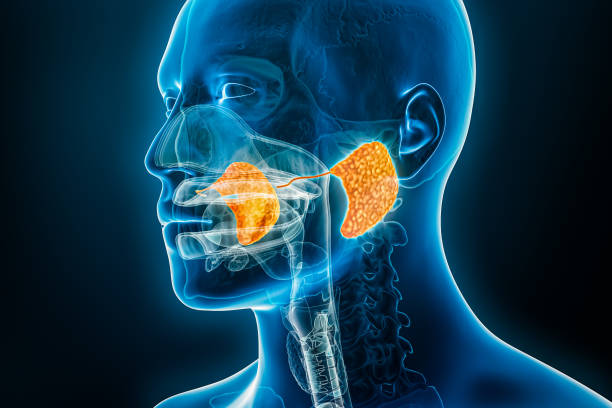Senthil Kumar, Medical Oncologist at Red Hills Chennai, shared a post on X:
“First-Line Systemic Treatment for Advanced/Metastatic Salivary Gland Tumors.
Disease Overview
Incidence: Rare malignancies (~5% of head and neck cancers).
Prognosis: Highly variable depending on histology and molecular profile.
Factors Impacting Survival:
Patient Factors:
- Age.
- performance status (PS).
- comorbidities.
Disease Factors:
- Histology.
- Tumour burden.
- Disease tempo (indolent vs. rapidly progressive ).
- Symptomatic vs. asymptomatic.
- Molecular alterations.
Molecular Alterations and Targeted Therapy Options
Molecular Alterations to be Tested:
NTRK Fusions → Larotrectinib, Entrectinib (First-line).
HER2 Amplification/Overexpression → Trastuzumab + Taxane/Carboplatin-Paclitaxel ± Pertuzumab (First-line) 💉, T-DM1, Trastuzumab Deruxtecan (Subsequent lines) .
Androgen Receptor (AR)
Expression → Chemotherapy (First-line) , ADT (Bicalutamide + GnRH analogs) or Enzalutamide (Subsequent lines).
RET Mutations → Selpercatinib, Pralsetinib (First-line).
BRAF Mutations → Dabrafenib + Trametinib (First-line).
MSI-High/dMMR Tumors → Immunotherapy (Pembrolizumab, Nivolumab) (Second-line).
Note: Tumor NGS profiling may be done for all patients due to the rarity and genetic heterogeneity of salivary gland tumors.
Chemotherapy Regimens
First-Line Chemotherapy Options:
Combination Regimens:
CAP: Cyclophosphamide + Doxorubicin (or Epirubicin) + Cisplatin.
Cisplatin + 5-FU.
Cisplatin + Gemcitabine.
Cisplatin + Vinorelbine.
Carboplatin + Paclitaxel.
Cisplatin + Docetaxel,
Single Agents:
Vinorelbine,
Mitoxantrone,
Cisplatin,
Gemcitabine,
Paclitaxel (Note: Ineffective in ACC),
Doxorubicin (or Epirubicin),
Methotrexate,
Special Consideration for SDC:
HER2-Positive: Trastuzumab + Taxane/Carboplatin-Paclitaxel ± Pertuzumab.
AR-Positive: Chemotherapy (First-line) → ADT (Bicalutamide + GnRH analogs) (Subsequent lines).
Special Considerations for Adenoid Cystic Carcinoma (ACC).
Oligometastatic Disease:
Local ablative therapies (surgery, SBRT, ablative radiation) may be employed.
Polymetastatic Indolent Disease:
Observation is an option for asymptomatic, stable disease.
Polymetastatic Progressive Symptomatic Disease:
If disease shows ≥20% increase over the preceding 6 months or in case of organ dysfunction , initiate chemotherapy as first-line treatment.
Surgical Options:
Lung metastasectomy for oligometastatic disease with Disease-Free Interval (DFI) >3 years.
Second-Line Therapy:
TKIs like Lenvatinib, Sorafenib, Axitinib.
Final Insights:
1. NTRK Fusion-Positive Tumors:
First-line:
Larotrectinib or Entrectinib due to high response rates and low toxicity.
2. HER2-Positive Tumors:
First-line:
Trastuzumab + Taxane/Carboplatin-Paclitaxel ± Pertuzumab.
Subsequent Lines:
T-DM1, Trastuzumab Deruxtecan.
3. AR-Positive, HER2-Negative Tumors:
First-line:
Platinum-based Chemotherapy.
Subsequent Lines:
ADT (Bicalutamide + GnRH analogs) or Enzalutamide.
4. RET and BRAF Mutations:
First-line:
Selpercatinib, Pralsetinib (RET)
First-line:
Dabrafenib + Trametinib (BRAF)
5. ACC:
Observation for asymptomatic, indolent disease.
Local Ablative Therapy for oligometastatic disease.
Systemic therapy 💉 for symptomatic/progressive disease.
Lung Metastasectomy for oligomets, DFI >3 years
6. MSI-High/dMMR Tumors:
Subsequent lines:
Pembrolizumab or Nivolumab.
7. Clinical Trials:
Strongly encouraged due to limited standard treatment options
8. General Approach for SGC:
Systemic therapy preferred for rapidly progressive or symptomatic disease.
Molecular profiling is critical for treatment decisions.°
Oligometastatic disease: Consider local therapies (surgery, ablative therapies, radiotherapy).”
